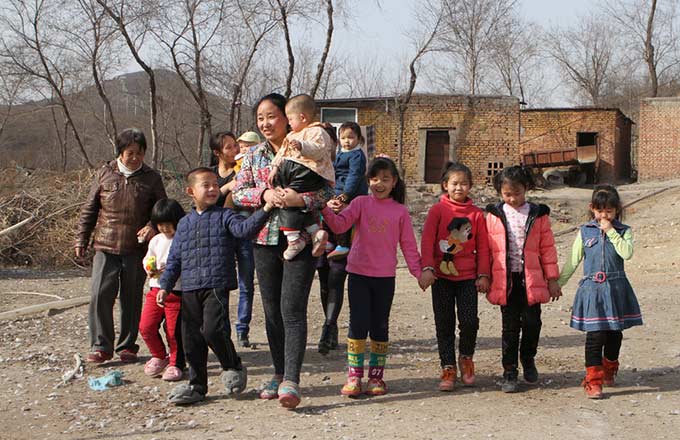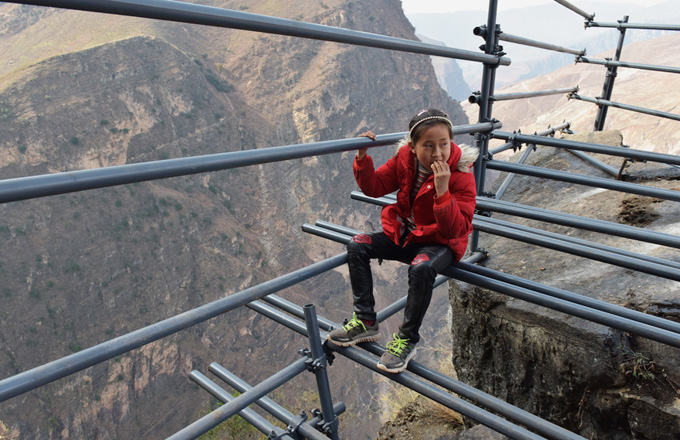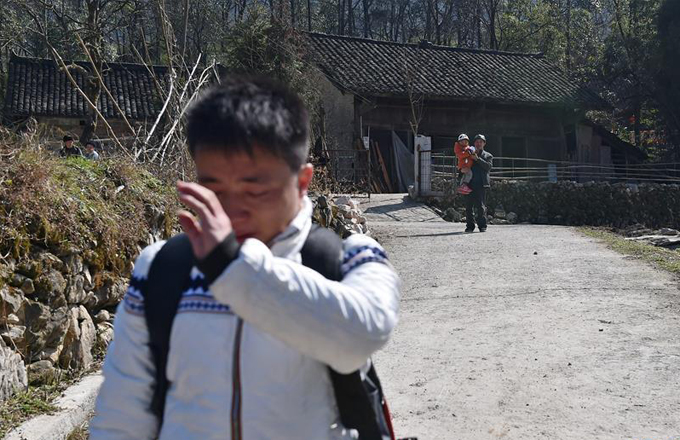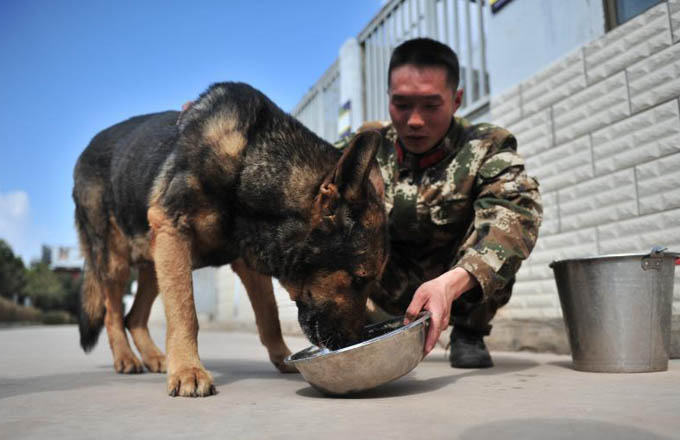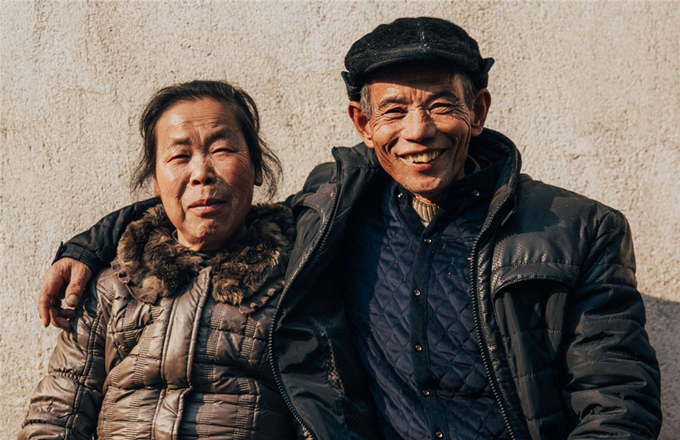All-out rescue for buried miners in Tibet
|
 |
|
A rescuer with a sniffer dog inspects at the site of a mining area landslide in southwest China's Tibet autonomous region, March 31, 2013. [Photo/Xinhua] |
As of 9:15 p.m., a total of 17 bodies have been recovered since the landslide occurred two and a half days ago in Maizhokunggar County, about 68 km from regional capital Lhasa. Another 66 miners remain missing.
In two locations near the area where the new bodies were found, rescuers retrieved articles such as tents, clothes and kitchen knives, according to rescuers.
That has led them to believe more miners might be buried under debris at these two locations.
The disaster struck a workers' camp of the Jiama Copper Polymetallic Mine at about 6 am on Friday, burying 83 workers and 11 machineries from Tibet Huatailong Mining Development Co. Ltd. The company is a subsidiary of China National Gold Group Corporation, the country's largest gold producer.
"Large swathes of rocks suddenly fell down from the mountaintop and the huge sound shook the whole valley. It was a terrible scene," remembered a villager living nearby.
Chinese President Xi Jinping and Premier Li Keqiang on Friday ordered exhaustive efforts to rescue the buried workers
On Saturday, rescuers managed to recover two bodies in the same area, as the huge amount of debris, 4,600-meter altitude and snowy weather hampered rescue efforts. The survival chances of the missing miners are believed slim.
More heavy-duty excavating devices were transported on Sunday to the site.
"There are cracks on the mountaintop and secondary disasters are possible," said Jiang Yi, an armed police officer who joined the rescue efforts at the scene.
A special team of experts has been formed to monitor the mountain around the clock and three walls were built at the landslide site to guard against secondary disasters.
Meanwhile, more medical staff were on their way to the scene as many rescuers have been suffering from slight altitude sickness.
"We have treated rescuers who suffered altitude sickness or a fever due to the snowy weather," according to Li Suzhi, president of the General Hospital of Tibetan Military Command. Li, leading a team of more than 40 members, arrived at the site on Saturday afternoon.
Local villagers have also tried to send hot food to the rescuers.
The affected area is 3 km wide and 30 meters deep on average, covered with about 2 million cubic meters of mud, rock and debris. More than 300,000 cubic meters of debris have been combed for survivors.
Some 3,500 rescuers, 300 large-scale pieces of machinery, 10 sniffer dogs and 20 life detectors, have been mobilized at the site, according to the rescue headquarters.
"We will carry out an in-depth investigation into the exact cause of the landslide," promised Yang Dongliang, head of the State Administration of Work Safety, who arrived at the landslide site on Saturday.
Wang said the probe had begun and the final results will be made public. Experts with the Ministry of Land and Resources and the regional government have arrived at the scene.
"As long as there is a gleam of hope, we will never give up our rescue efforts," said Wang.
The identities of the miners have been confirmed and their relatives are also on their way to Lhasa. The majority of the victims were from geological institutes or mining companies from northwestern Gansu Province, southwestern Guizhou Province and Lhasa.
Related stories:
Hopes fading for mine landslide victims in Tibet
Body found after Tibet landslide buries 83
Troops, police assist Tibet landslide rescue
Emergency response to Tibet landslide
No survivors, bodies found after Tibet landslide




